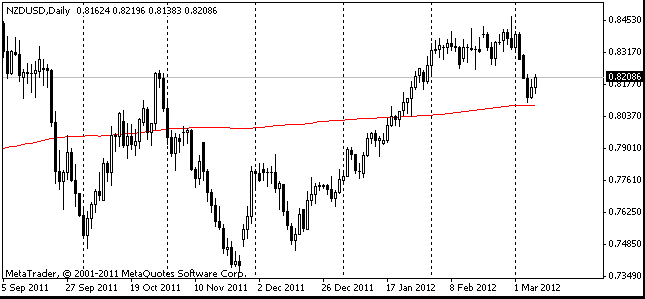EUR/usd
Friday's US payrolls were quite favourable. They showed a 146K growth against everybody's expectations that the storm would spoil the statistics and wouldn't let the indicator go above 100K. Yet, the report was not all positive – last month's data were revised down (from 171K down to 138K). The decrease in the work force looks disturbing. This is exactly the factor, which helped the official unemployment rate drop from 7.9% to 7.7%. Yet, it will hardly arouse any strong optimism in the market. America is still suffering long-term unemployment: on average jobseekers cannot find a job for about 40 weeks (a bit less than 10 months). Of course, under such circumstances the number of those who finally give up hope to find a job is growing, which formally makes the unemployment stats better. However, the participation rate remains the lowest in the previous three decades. If it keeps going like this, the situation which was observed in the 60s may happen again, with the only difference that at that time the unemployed were women and they didn't look for jobs. And now the high-risk group is made up by the people in pre-pension ages, who find it difficult to keep up with the technical progress. The market reaction was as dubious as the employment statistics. The stock markets first soared, but then decided that such statistics carried with it a threat that QE wouldn't be expanded this month and started selling the stocks. Initially the currency market treated the release as if it was favourable for the dollar. Yet it didn't last for long as for almost the whole week the dollar was actively purchased. So further the euro/dollar was consolidating at the support at 1.2890. Now the pair is 10 pips above 1.29, where it will probably spend the whole day.

GBP/USD
The pound felt much better than the euro on Friday. The pair managed to break below its 200-day MA and also open the week with a gap down. The week was opened at 0.8035 against 08103 a week before. There is a suspicion that the pair is forming a double top (or even a triple one, with the short-term growth in June considered). This scenario (the downward reversal) due to the growth of the pound looks especially surprising against the decrease in manufacture in October (-0.8% against the expected growth by 0.9%). The good news was brought by NIESR's estimate, according to which the economy grew by 0.1% over three months, ending in November. It gives hope that there won't be any slowdown in the fourth quarter.

USD/JPY
A kind of a triple top can be observed in usdjpy, though at shorter time frames. Over the last three weeks the pair was bouncing off 82.70. The hottest news of the week is election to the lower house of the Japanese parliament. Under such conditions the technical analysis may fail to give proper forecasts for a while. The weakness of the yen may be aggravated by the persistence of the liberal-democratic party (the prospective winner of the election), since the latter promises to put a higher pressure on the BOJ in order to support the economy by means of weakness of the national currency.

NZD/USD
The New Zealand dollar looks pretty well at the beginning of this week's trading. The situation is that favourable, first, due to keeping the RBNZ's interest rate unchanged and also to a handsome increase in the country's manufacturing activity in the third quarter. The data released this morning demonstrated a 2.6% growth. It's not bad for the country, suffering the reduction of exports on declining food prices.
